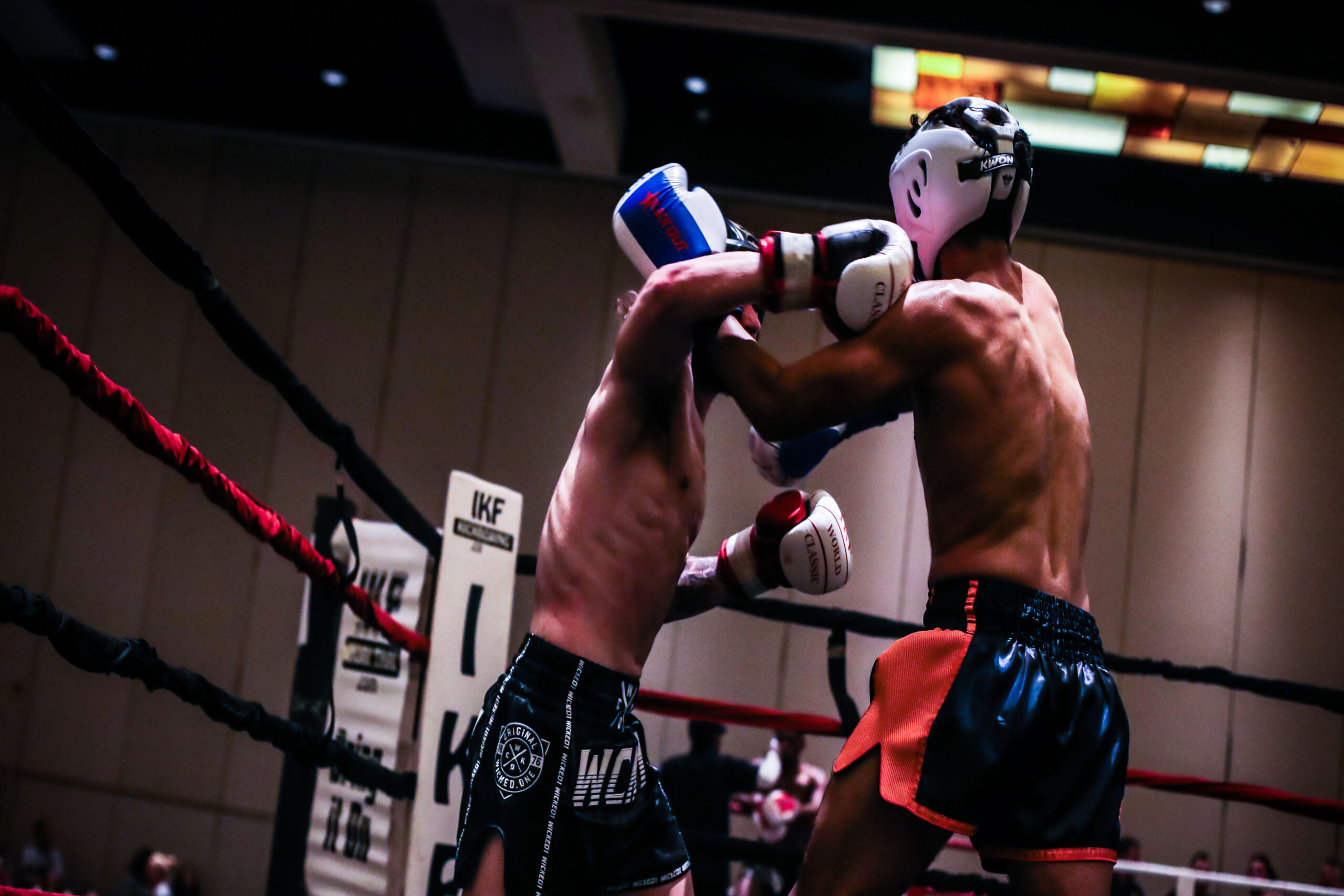Muay Thai, renowned for its powerful strikes and devastating kicks, is often perceived as a striking-oriented martial art. However, beneath the surface of thunderous kicks and clinch work lies a question that sparks curiosity among enthusiasts: Does Muay Thai have grappling? In this exploration, we delve into the oftenoverlooked dimension of grappling within Muay Thai, unraveling the techniques, strategies, and unique aspects that add depth to this dynamic martial art.
The Dominance of Striking in Muay Thai
1. Signature Techniques: Kicks, Elbows, and Knees
Muay Thai is globally celebrated for its signature striking techniques, including powerful kicks, razor-sharp elbows, and knee strikes. These techniques form the backbone of Muay Thai’s offensive arsenal, emphasizing precision, power, and versatility in stand-up combat.
2. Clinch Work: A Distinctive Element
The clinch, a close-quarters grappling position, is a distinctive element of Muay Thai. Fighters engage in the clinch to control their opponent, deliver knee strikes, and set up throws or sweeps. While the clinch involves elements of grappling, it represents only one facet of the broader grappling spectrum.
The Overlooked Art of Muay Thai Grappling
1. Clinch Technique: Knees, Throws, and Sweeps
In Muay Thai, the clinch serves as a nuanced form of grappling, allowing fighters to control and manipulate their opponent’s movements. Skilled practitioners employ knee strikes with precision, execute throws to off-balance opponents, and utilize sweeps to bring them to the canvas. The clinch, therefore, is a crucial aspect that blends striking with grappling elements.
2. Defensive Grappling: Escapes and Counters
While Muay Thai places a strong emphasis on offensive techniques, defensive grappling is equally important. Fighters learn to defend against clinch attacks, escapes from holds, and counter-attacks to regain control. This defensive grappling aspect adds a strategic layer to Muay Thai, showcasing the art’s versatility.
Integration of Techniques: Striking and Grappling
1. Seamless Transitions Between Phases
One of the distinctive features of Muay Thai is the seamless transition between striking and grappling. Fighters adept in the art can effortlessly switch from delivering powerful strikes to engaging in the clinch, creating a fluid and unpredictable combat style. This integration of techniques distinguishes Muay Thai from other strikingoriented martial arts.
2. Combination Attacks: Striking and Ground Control
While Muay Thai primarily focuses on stand-up combat, the art’s principles can be adapted to ground control techniques. Fighters with a strong foundation in Muay Thai can leverage their striking skills in combination with ground control strategies, showcasing the adaptability of Muay Thai techniques in diverse combat scenarios.
The Role of Grappling in Muay Thai Training
1. Clinch Drills and Sparring
Muay Thai training incorporates specific drills and sparring sessions dedicated to the clinch. Practitioners engage in clinch work to develop the skills necessary for controlling opponents, delivering effective knee strikes, and executing throws and sweeps. Clinch training is an integral part of a Muay Thai fighter’s overall skill set.
2. Defensive Grappling Techniques
Defensive grappling techniques are also emphasized in Muay Thai training. Fighters practice escapes from clinches, counters to opponent attacks, and strategies to regain control when in compromised positions. This defensive aspect ensures that fighters are well-rounded and equipped to handle various scenarios in the ring.
The Evolving Nature of Muay Thai
1. Adaptations for Modern Competitions
As Muay Thai continues to evolve, adaptations for modern competitions contribute to the art’s dynamism. Fighters may incorporate techniques inspired by other grappling disciplines, integrating them seamlessly into their Muay Thai repertoire. This adaptability ensures that Muay Thai remains a relevant and competitive martial art.
2. Influence on Mixed Martial Arts (MMA)
The clinch work and grappling elements in Muay Thai have had a notable influence on the sport of mixed martial arts (MMA). Many successful MMA fighters with a background in Muay Thai leverage their clinch expertise to control opponents, deliver knee strikes, and set up takedowns. The integration of Muay Thai grappling adds a distinct flavor to MMA competitions.
Conclusion: Celebrating Muay Thai’s Versatility and Evolution
In conclusion, the multifaceted nature of Muay Thai extends beyond its reputation as a striking-oriented martial art. The often-overlooked grappling dimension within Muay Thai, particularly in the form of clinch work, adds layers of complexity, strategy, and versatility to this ancient combat discipline.
While Muay Thai practitioners are renowned for their devastating kicks, elbows, and knee strikes, the seamless integration of grappling techniques showcases the art’s adaptability. The clinch, with its offensive and defensive components, serves as a bridge between striking and grappling, creating a unique combat experience that sets Muay Thai apart.
As the martial arts landscape evolves, Muay Thai continues to play a significant role in shaping not only striking focused disciplines but also contributing to the repertoire of mixed martial artists. The art’s influence on modern competitions and its ability to adapt to contemporary challenges underline the enduring legacy of Muay Thai.
So, the next time you witness a Muay Thai bout, appreciate the intricate dance of combat that encompasses both striking brilliance and subtle grappling nuances. Whether you’re a practitioner seeking to master the art or an enthusiast appreciating its beauty, Muay Thai’s grappling dimension adds a captivating chapter to its storied history—one that continues to evolve, surprise, and inspire generations of martial artists worldwide.

